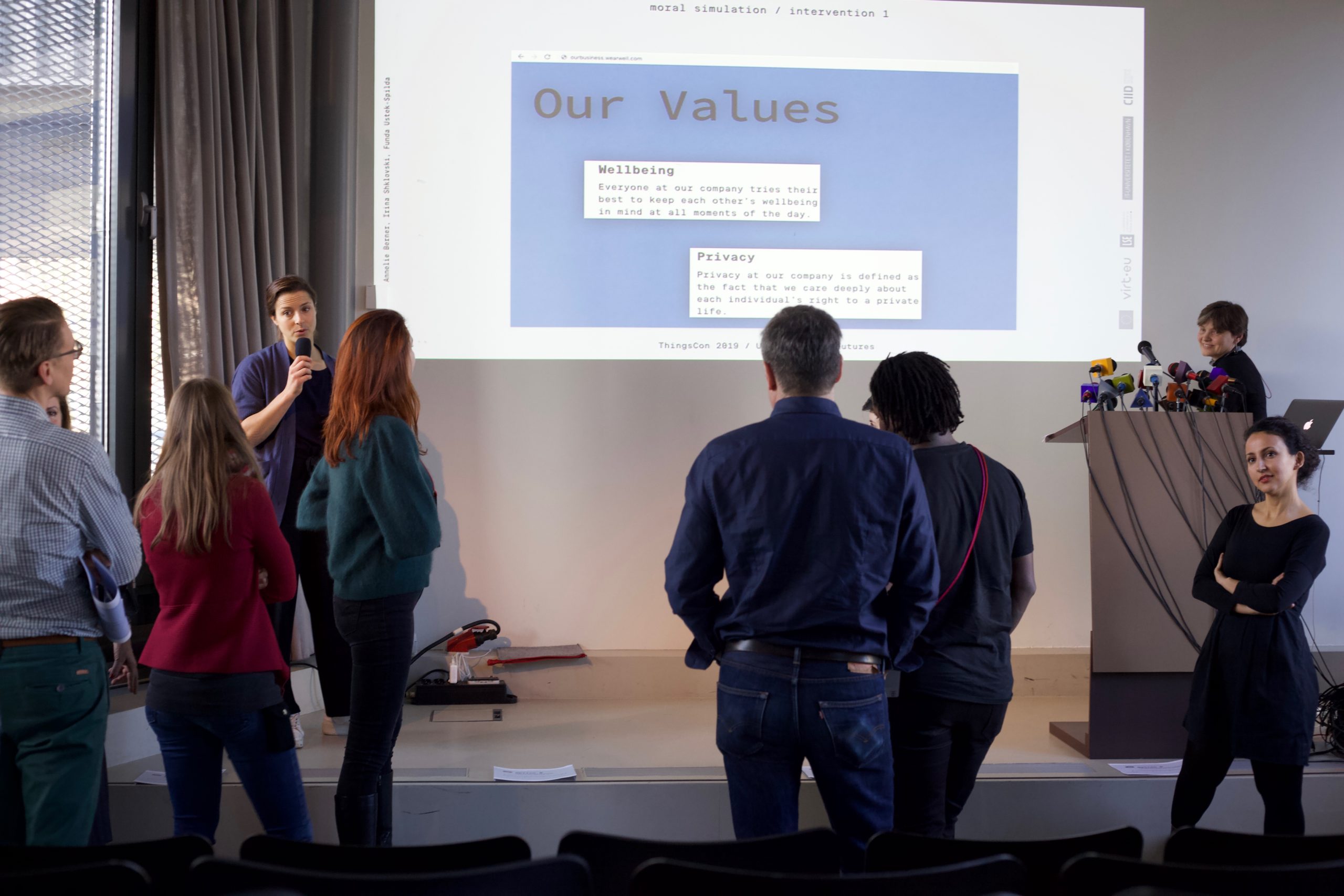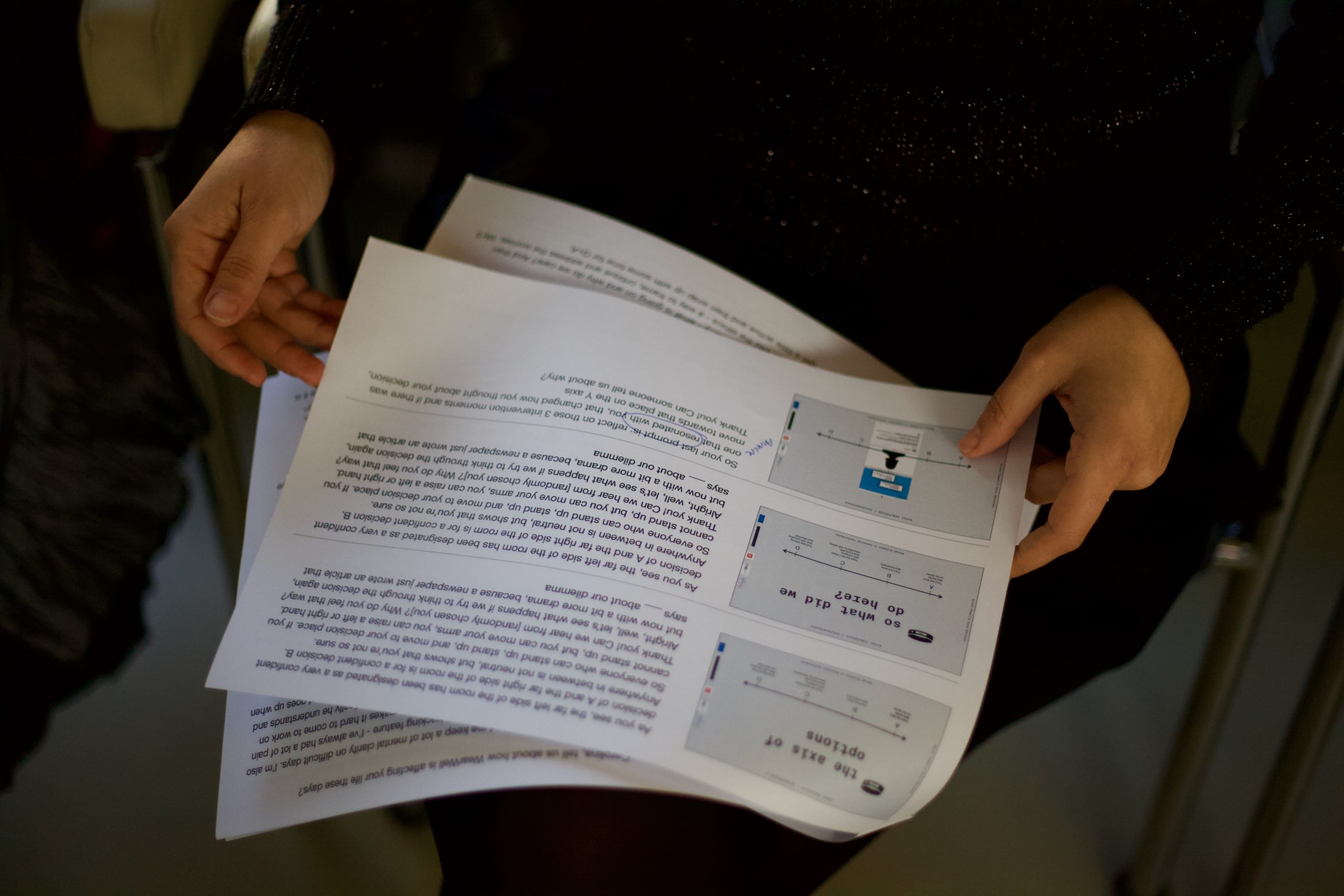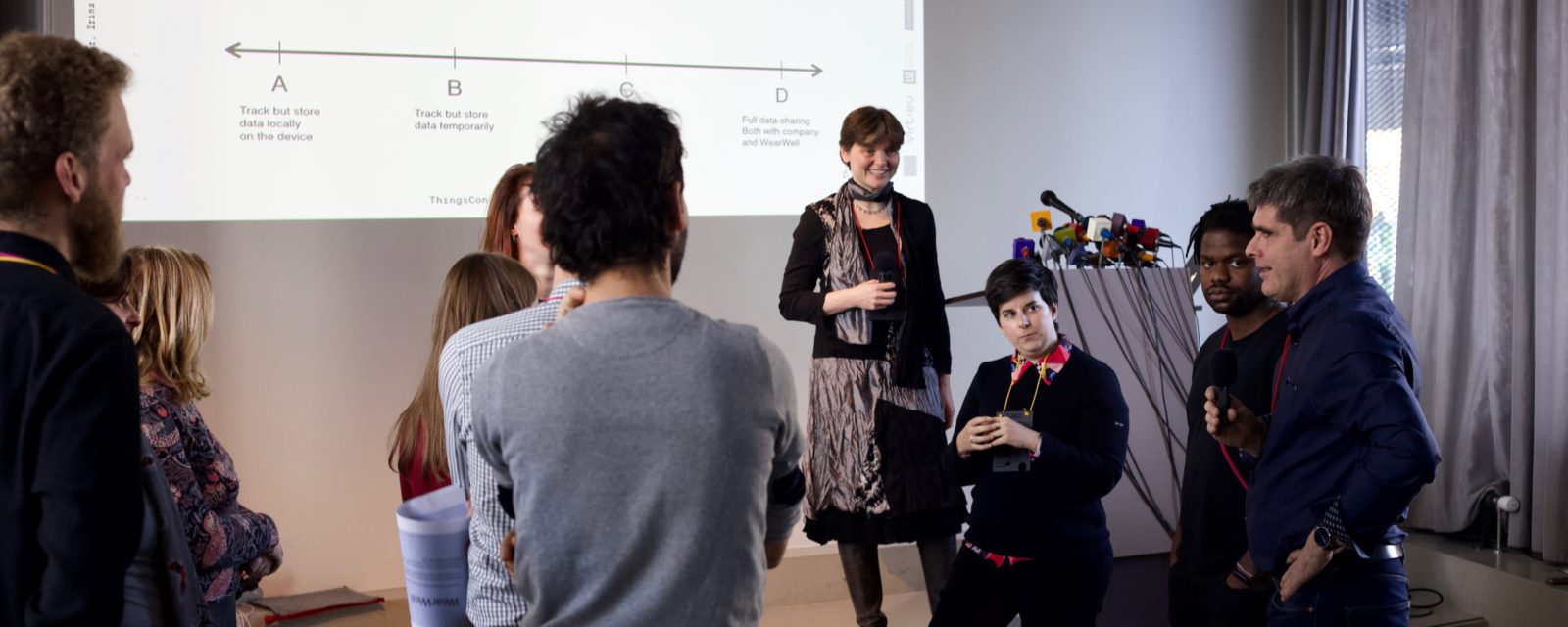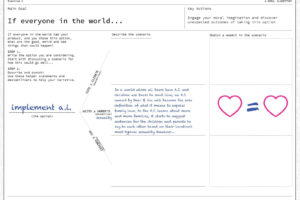Unforeseeable Futures: how to talk about ethics?

Goals
This role-play workshop gathers a group of diverse participants to discuss a range of options developers face when making difficult decisions within a working environment.
The storyline of this workshop focuses on how specific technologies will intervene in people’s lives. In this case, we focus on a fictionary company called WearWell and discuss the challenges and opportunities of data storage, access and user options, which then defines what services we (fictional workers) could offer.
Recommendations for facilitators
We advise you to rehearse one or two days in advance as you will take part in roleplay as both facilitator and fictional character.
Approach
The following is an example of the kind of intervention we created, having iterated over this process at least twice. The logic is as follows:

Define a case to which the general public can relate. In our example, we presented a fictitious company and smart wearable (IoT product) “WearWell.” We invited the audience to be part of the company working on the product
Define options that represent a spectrum of different beliefs and values. In this case, we look at a data storage decision that had four different options:
Option 1_Track but store data locally on the device only
Option 2_Track and store data on the company’s cloud but only temporarily.
Option 3_Track and store data on the company’s cloud but don’t share with the company – share only with WearWell for A/B testing.
Option 4_Full tracking, data storage and data-sharing both with company and WearWell.
The audience may have an immediate reaction to the options, but eventually, through discussion, they should realise that the obvious answer is not as easily upheld as they first thought because it is in tension with another principle of designers developers. For example, the first reaction of Option 1 becomes complicated once a participant realises that taking that decision would mean that the data collected by the device cannot be processed in order to make it more meaningful over time.
Create interventions to trouble assumptions. Each intervention should be designed to share new information, where the new information aligns with a particular line of ethical questioning. In this workshop, each intervention aligned with one of the three theories of ethics that compose our Ethical Framework (Virtue, Care and Capabilities).
Intervention 1 gets at individual values where the facilitator can either select values or leave it open and select values with the workshop, and in so doing, presents a “behind the scenes” Virtue Ethics line of questioning.
Intervention 2 is in line with the Care Ethics line of questioning and therefore is an attempt to push people outside of their comfort zone, get people to think about difference, go beyond their expectations of the user.
The final Intervention 3 is in line with the Capabilities Approach and demonstrates that there are limits 10 to what the company and participants can accomplish no matter how much they care or try to align with their principles.
After each intervention, we ask participants to make a choice (or revise their previous choice), and then we call upon participants from many standpoints to discuss why they made a given choice. As facilitators, we engage minimally in this section, simply demonstrating respect and full listening to each participant and making sure to call upon a diverse set of the participants. When needed, we moderate and keep the discussion to a time limit in order to meet the constraints of the overall session.
Once we have finished the three interventions, the scenario experience is over and we note to the audience that we have exited that section of the workshop.
At that point, we explain what we did and describe how each intervention leads you to question things differently according to different ethical frameworks.
We describe each theory we used and how they go in each intervention, as well as explain why we use these theories together.
The workshop can be modified in the following ways:
- Facilitators can provide a paragraph to explain each option.
- During the choice of options along a spectrum section, there are multiple ways to gather decisions. We advise keeping the decisions visible and public rather than anonymous as the scenario depends upon open discussion and understanding of one another’s inclinations. However, we note that this also requires the proper set up of a comfortable and safe play space, where the facilitators should overtly explain that this is a fictional scenario and that participants should treat the experience more as roleplay than a literal job.a. Depending on the layout of the room, we can set up a physical space that runs along an X or Y axis and lays out 4 options evenly across this axis. Participants should then physically move to their decisions throughout the intervention/decision section of the workshop. This possibility is well received in that it changes the dynamic of a typical lecture, connects relations between individuals and their decisions in space.
b. Alternately, participants can write their answers on paper or post-its in large numbers and hold these up to show their decisions. - The values intervention can either be defined by the facilitator – where they decide the values the company stands for – or the facilitator can invite all, some participants to add their own values from a predefined list.




